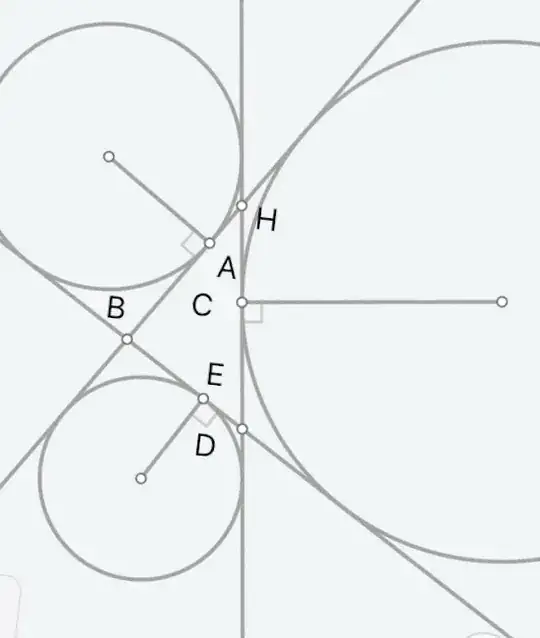Inspired by What is the name of this theorem of Jakob Steiner's, and why is it true?

For any triangle $HBD$, how to prove $AH = ED, \ HC = BE, \ CD = AB$?
Inspired by What is the name of this theorem of Jakob Steiner's, and why is it true?

For any triangle $HBD$, how to prove $AH = ED, \ HC = BE, \ CD = AB$?
Here's a proof that doesn't assume the midpoint property mentioned in my comment. (That property follows from what's show here, however.)
In $\triangle ABC$, let the side-lines through $A$ meet the excircle opposite $A$ at points $B_A$ and $C_A$. Necessarily, $|AB_A| = |AC_A|$. If that excircle meets $\overline{BC}$ at, say, $D$, then also $|BD|=|BB_A|$ and $|CD|=|CC_A|$. Consequently,
$$|AB|+|BD|=|AB|+|BB_A|=|AB_A|=|AC_A|=|AC|+|CC_A|=|AC|+|CD| \tag{1}$$
Since $|AB|+|BD|+|CD|+|AC|$ is the perimeter of $\triangle ABC$, the left- and right-most sides of $(1)$ must each equal the semi-perimeter, which we'll call $s$. In other words, $D$ is the perimeter bisector with respect to $A$. But then the point, call it $E$, where the excircle opposite $B$ touches $\overline{AC}$, is the perimeter bisector with respect to $B$. Thus, $$|BD| = s - |AB| = |AE| \tag{2}$$ which gives the result. $\square$